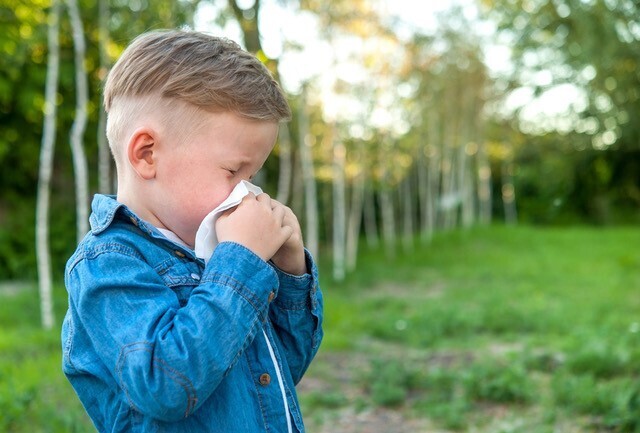Summertime snuffles
Published
Having a child with hay fever can be a real challenge. Giving antihistamines might cause drowsiness and grogginess – not what you want for your lively and energetic child! But there are other options to prevent and alleviate allergy symptoms. Airborne allergens expert and creator of HayMax organic allergen barrier balm, Max Wiseberg, has some practical advice:

‘In the last few decades a lot has changed in the allergy world,’ says Max. ‘Some of the changes – including the range and effectiveness of treatments available – have been really positive. But sadly the number of children who suffer from allergies has grown. And whatever the allergy – be it hay fever, allergic rhinitis, asthma, dust, mould or pet allergy – for both the child who suffers and the parent who suffers with the child, the misery it brings has not changed.
‘So what can parents do to help their children manage hay fever symptoms? Quite a lot, fortunately! Here are some ideas. As with many conditions, prevention is better than cure!’
- Take your child to the GP to get a proper diagnosis. If the symptoms occur only in high summer on hot, sunny days, it’s almost certainly hay fever: although it could be any number of other allergies and treatment might differ in each case.
- Change your child’s clothes daily and after they’ve been playing outside. Wash their face and hair when they come indoors having spent time outside. Pollen sticks to clothing, skin and hair, so symptoms can continue even when indoors. Washing or showering will remove any pollen remaining on the skin and hair.
- Encourage them to wear wraparound sunglasses and a hat or cap when outdoors. This creates a protective layer between their eyes and the pollen-laden atmosphere and can reduce symptoms considerably. It also relaxes their eyes, which relaxes them. A cap or hat helps stop pollen being trapped in the hair.
- Wash your children’s bedding frequently. Pollen grains come indoors borne on the air and stick to bedding. So frequent washing of bedding, covering the bed with a sheet – which is carefully folded and stored away from the bed during the night, before they get into bed – and turning pillows just before they are tucked in, can all help reduce symptoms.
- Limit their exposure to pollen during peak periods. Pollen is released early in the morning and travels upwards as the air warms up. In the evening, as the air cools, it moves back down again. Symptoms are usually worst during the early morning and evening, when the pollen grains reach nose height, so try to keep children indoors at these times.
- Visit the NHS website for lots of useful information on how to recognise hay fever in children, how to distinguish it from other allergies, and how to help your child or children cope with the symptoms.
- Applying HayMax to the base of the nostrils (where the air comes in) should help for all airborne allergens. Apply the allergen barrier balm around the rim of the nostrils and bones of the eyes immediately after washing or showering first thing in the morning and before going to bed. Pop a pot in their daytime bag and, if they are old enough, leave a pot by their bed so they can re-apply as needed. In independent studies, HayMax has been shown to trap over a third of the pollen before it gets into the body.
Visit haymax.biz







